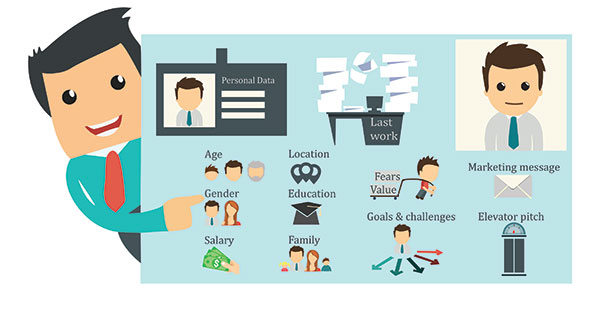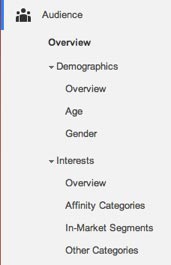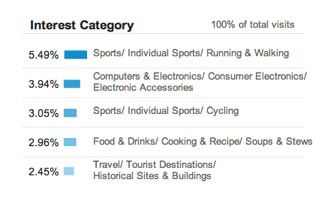In this ultimate guide to attracting more customers, we’re going to look at getting more customers of the kind you want and not the type that you don’t.
Regularly Superb Digital are pitching to new clients, they talk to us about getting enquiries from prospects who are just not right.
When starting up in business we tend to go after every potential customer that we can, in an attempt to keep our heads above water. Once you have got yourself more established, however, you begin to see patterns forming, and you can start to think about what customers you want to attract. Almost every business has clients who they are keen to avoid – for a whole number of different reasons, so how can you go about getting more of the customers that you want?
The truth of it is, that often problem clients are the ones who take up the most of your time, and earn you the least money, so unless you want to spend your life frustrated, annoyed and unable to grow your business, you are better off trying not to attract these less desirable clients in the first place.
Table of Contents
When You First Start Your Business

To work out how to get more of the customers that you want, the first and most important thing to do is actually know who your ideal customer is – and who it isn’t! One of the best ways to work this out is by writing down five of your best customers and five of your worst. You can then analyse these customers to give you a better idea of the kind of customer that you want.
Write down as many details as you can about your best and worst clients – information such as:
- The type of business that they have
- What kind of work they ask you to do, or what kind of products they buy
- Where you got the client from
From this information, you can now look for patterns to see the characteristics of the customers that you should and shouldn’t be trying to attract.
Defining Your Ideal Customer
Client and Marketing Personas
The next step is to build some perfect client or marketing personas. This means you will create a fictional, ‘perfect’ customer, using the information that you have already found out, as well as adding some other information like the demographics of your customer.
By creating ideal customer personas you will be able to better understand the people you will be targeting your marketing efforts towards. It will help you to understand better factors such as your client’s:
- Buying habits
- Dreams and desires
- Wants and needs
- Important things in life
- Problems

From this understanding, you will find it easier and more effective to:
- Create content that is interesting and useful to your clients, engaging with them better.
- Be in the right place at the right time – knowing when and where your clients will show up, and being there to meet and engage with them (both on and off line).
- Understand your customer’s wants and needs and therefore being able to design, create and develop new products and services.
- Boost referrals as you can point people in the right direction of who their referral targets are.
According to James Heaton, writing for the Tronvig Group, creating these marketing personas is useful because:
“First, they help force the creators to get into character. Specificity is a good way to push the process deep enough to facilitate genuine understanding of the thoughts, feelings, and behaviours of your customers. We are not all naturally good at this, and it’s important for a persona’s effectiveness.
Second, it can help you find previously undetected tactical opportunities for your product, service, or institution. These can make what you do more useful and relevant in your customer’s lives. Where does your product or service constructively intersect with what Sally does or what Sally cares about? Once uncovered, these are very valuable insights.”
It is generally recommended that you create between 3 and 5 different personas as this will be big enough to cover all or at least most of the different aspects, but small enough to be relevant and concise. A typical template would look like this:
- Name – Make sure that you give them a real name so that they seem like a real person- this is vital to creating a believable persona.
- Work details – Write about the company that he/she works for – size, industry and about their job role within the industry.
- Demographics – Use your website analytics to get information about your typical customers and then use that information to make it the customers that you want.


- Goals and Challenges –Talk to your actual customers about what goals and challenges they face in your field. Try to find out about what challenges they have, what impedes them and what slows down the process of overcoming them. Find out about their goals and the issues that they face in achieving them, who do they turn to for help and advice, will they need to sell a change to somebody and if so, to who?
- Marketing Message and Elevator Pitch – This is where you decide how and why you are going to market what product or service. This is an area that will be developed over time, so you can start off just by writing down your ideas.
These are just the basics. You will probably want (and need) to add in some categories which are more specific to your field – for example, a medical company will need to know the different information to a travel booking company, for example. Some extra information might include what social media channels they use, hobbies, computer literacy, medical history, what blogs they read, where they get their news and getting real quotes from customer interviews.
Whilst you may want to just concentrate on the kind of customers that you want, it is also important to create personas for the customers that you don’t want. This is because it gives you the chance to avoid certain things that might attract them – e.g. advertising in a certain place, or in a certain way.
Where to Get Your Client Information
You can use the information that you have found from your initial ‘ideal customer’ analysis. There are also some other sources of information that is specific to your existing customers. Remember though, this information will also include your ‘less desirable’ customers so you need to think carefully about what information you will use. These sources include:
- Analytical data from your website – customer demographics as well as keywords that they used to find you (Google Analytics and Google Search Console).
- Talk to your team – anyone who deals with customers on a personal level.
- Speak to your customers yourself to find out any extra information.
Interviewing Your Existing Customers
Interviewing is a good way to do research for information about your marketing personas. The prospect can be a little daunting, so here are some tips for interviewing to gain information for creating a marketing persona:
- Go to your actual customers – there’s no better way of finding out about a typical customer than by speaking to them themselves. Make sure that you go to both ‘good’ and ‘bad’ customers to be able to understand both types. It might also be a good way to engage with ‘bad’ customers to see if there is a way that you can move forward.
- Talk to your ex-customers too. By engaging with them you also have the opportunity to try to get them to come back, offer them a voucher, and get feedback on your product or service.

- Talk to people who haven’t (yet) bought anything from you. You can use information from those who have shown an interest, for example. This not only gives you some balance, it also gives you an opportunity to get in touch and give them the chance to get to know you.
- It can be difficult sometimes to get people to agree to be interviewed, so some ideas to get people to say “yes” include – offering incentives (vouchers or a gift card), making it clear that you aren’t making a sales call, making it easy for them – let them choose a time that is convenient for them and send them a calendar reminder closer to the time.
- Start off by working on the basis of interviewing 3-5 people for each type of persona that you are creating, but as a rule of thumb, keep interviewing until you can begin to start to predict the answers.
- Ask ‘why’ as much as you can.
What Are Your Customer’s Problems and How Do You Solve Them?

Now that you have created your marketing personas you need to think about how you are going to target your marketing. By targeting your marketing towards the customers that you ‘want’, you cut the risk of attracting customers that you don’t want. One of the best ways to market to a specific group is to understand what their problems are and then use your product or service to show how your business can solve these problems – even if they didn’t know that they had a problem in the first place!
If you don’t know what the problem is, how can you sell someone the solution? If you don’t understand the problem you are trying to solve, not only will you not make the sale, but you also waste your time and lose your credibility.
The most successful salespeople:
- Find customer problems and then find convenient, quick or cost-effective means to solve them…
- Understand that if you find a solution to a big or pressing problem, people are prepared to pay a higher price…
- Understand how to spot someone who has a problem that they are ready and wanting to be solved and those that aren’t…
- Are systematic problem solvers – using a process such as the following, to solve problems –
- Identify the problem – Identify which problems are a priority for customers – ask questions and observe, don’t just try to sell products.
- Analyse the problem – How often does the problem occur and how serious is it? When does it occur? What causes it? How long has it been going on? Who does it affect? Is it getting worse?
- Decision criteria – How will both you and the customer make decisions when it is time to decide whether they buy? How will you weigh the criteria?
- Come up with multiple solutions – Don’t just stop at one, come up with several solutions and assess the strengths and weaknesses of each solution.
- Choose the best solution – Now pick the best solution according to the criteria identified in no. 3.
Once you have a good understanding of the typical problems of your ideal customers, you can set out the information to make it clearer;
| PROBLEM | We are not getting seen enough in our marketplace | Too expensive to reach my audience |
|---|---|---|
| RESULT 1 | Lack of sales | Damaged profit margin |
| RESULT 2 | Competitors getting more custom | Spending money that should be going to other areas of the business |
| RESULT 3 | Loss of brand reputation | Difficult to keep up with competitors |
Setting out information in this way makes understanding your customer’s problems a lot clearer and therefore much easier to help them out with solutions through your product or service. As well as giving you clarity in the sales department, the fact that you have thought about these potential problems, demonstrates to your customers that you have a really good understanding of the issues that they are facing, the effect on them and that you ‘speak their language’.
How to Increase Your Sales
Selling by Problem Solving, Not Pitching
“A man who buys a drill doesn´t want a drill. He wants a hole.” – Theodore Levitt

And this is the basic premise behind selling a solution to a problem, not your product. People don’t buy a product or service because they want you or it. They buy something because they want the result of you or it. Bear this in mind when you are talking to people – you are there to solve their problems, not pitch a product.
What makes you different from the guy down the road?
One of the keys to marketing your business is to show how you are different from the guy down the road. What is your USP? Do you concentrate on solving customer problems, or helping them to solve their own problems, for example? Sometimes having a more specific niche is better than being an all-rounder as people will search you out as an expert in your field.
Now Let’s Put It All Together to Get More Clients
So now that you know who your target market is – the target market that you want – and that you don’t want, it´s time to come up with your strategies to appeal to these people in particular.
Your Website

Your website is the face of your business – just like your shop or office front, your receptionist and your sales rep – so you need to make sure that it is giving off the right image of your business.
This will go a long way into making sure that the right people are attracted to your website. Other important factors include:
- Using language, fonts and images similar to that which your target audience will use, but which is also appropriate to your business and the level of professionalism that you want to portray.
- Give appropriate information – what is it your target market needs to know before buying? Think about the personas you created earlier, what would they want to know – about your product, specifications, how to use it, how it can solve their problems, as well as reviews from people like them, explaining how great your product or service is.
- Make it easy for your target market to contact you and buy when they want to. Make sure that you add contact information with names and addresses (physical and email) and maybe have live chat feature or contact form. Remember: Only ask for the least amount of information for you to be able to answer the query or process a sale. A contact form or checkout procedure with unnecessary fields will put visitors off from purchasing or enquiring.
- If you are going to offer something for free in exchange for contact details or a newsletter, make sure that you are offering something which your target market would like to have. You can ask people during your interviews about what they would value and exchange their details for. Customers are pretty savvy these days, they know they’ll end up receiving further emails from you so you better make it worth their while, or they’ll just unsubscribe. Try to make it something that will help them or amuse them which is related to your business. For example, an e-book or free samples.
Search Engine Optimisation
Search Engine Optimisation needs to be built into your website from the ground up. It should guide the structure, navigation and choice of content. This means it will be baked into your digital marketing from the start and save you plenty of time and money further down the line.
Use your marketing personas to guide you to:
- Choose the right keywords to optimise for based on how and where your ideal customer searches for products and services just like yours.
- Research the most relevant and successful competitors in your field, analyse their SEO strategy and take the best parts.
- Find out where they search for advice and reviews and what blogs they read. This will give you a target list of highly relevant and topical websites to obtain backlinks from.
- Do they use and click on paid search listings or do they stick to the natural search results? This gives you the opportunity to promote yourself using Search Engine Marketing as well as organic SEO.
- Do they look for a local business when they’re searching or are they looking for a well known national provider?
Content Marketing

There is no point in having an amazing website if no one is seeing it – it’s like having a great advert that no one sees. One of the best ways to get your website found amongst all of the other websites is by content marketing. By regularly releasing useful, interesting and informative content, you can help your website rank among the top on search engine results lists.
So how can you make sure that your content marketing will attract the right customers? Well, the key is to put yourself in their shoes. You can use your marketing personas to work out what you think would be interesting and informative to them. You should also consider the following:
- What format would they prefer? You don’t have to write. You could put out content in the form of video, infographics or a podcast – or mix it up.
- Make your content output regular and consistent – think about what you think your target audience would want.
- Write about topics which you believe that the customers you are trying to attract would want to know about. A good way of coming up with content is by coming up with a FAQs list and answering these.
- Think about where you are going to publish your content…
…which brings us to the next stage.
Social Media

It is a crime for any business not to use social media for marketing as it is such a powerful tool. The key here is to ensure that you choose the right platform. This is where your research will really come in handy as you need to know which social media platforms are most used by your right customers.
Each social media platform is used by different demographics, so it is important that you use these same ones, and follow the guidelines on the best way to use each platform. For example, you would use LinkedIn in a different way to Twitter or Facebook.
From this, you can then go on to start looking for and engaging with your potential customers, get them visiting your website, and, start buying!
Tapping into existing audiences made up of your ‘ideal’ customers is one of social media’s main attractions, it can be time-consuming but worth it. Especially if you are a relatively new start-up with a small marketing budget.
Most social media channels now offer a paid advertising service. This can help boost your visibility on the various platforms even further, leading to more shares, more followers and ultimately more revenue.
Blogger Outreach and Guest Blog Posting
Blogger outreach and guest blog posting are great ways of building your brand, increasing traffic to your website and ranking higher on search engines. If you do it in the right way, you can ensure that you have a direct route through to a ready-made audience comprised of the ‘right’ customers that you are trying to attract.
The process of blogger outreach and guest blog posting is all about building relationships with influential bloggers and website owners in your field and raising your profile with their audience, a kind of digital PR. Over time this process develops your own audience. The blog articles you offer need to be of very high quality but they can link naturally back to your website, building authority and traffic.
You can find out who the influential bloggers in your industry are, through simple research online. You can also go back to your marketing personas to find out what things were of interest to your right customers, and then find some influential bloggers in these areas. Another great way to find out what blogs interest your target customers is to ask them if they regularly read any blogs – and if so, which ones.
When you are making your approach to blogs and writing your posts you need to make sure that your content is relevant to the blog and interesting to their readers. Most bloggers will allow you to add editorial links back to your blog articles, so long as they’re relevant, whilst others may restrict you to an ‘author bio’ at the end of your article with links through to your website and social accounts. Make sure that if people comment on your posts, you are ready to respond.
You can also return the favour and invite other people who are well-known in your field or seen to be a ‘guru’ of something that is relevant, to write a guest post on your site.
Conclusion
Attracting the kind of customers that you want is the key to ensuring the longevity of your business. By really understanding who they are, where they come from and what makes them tick, you can really begin to market to them specifically and start to see your hard work pay off.
Are you looking to maximise your business’ SEO? Book in your free strategy call today to find out how we can help.
